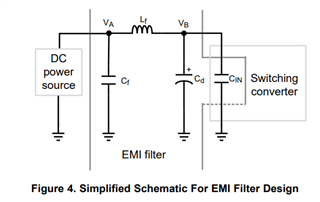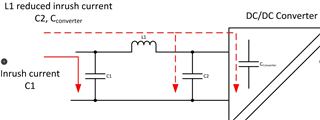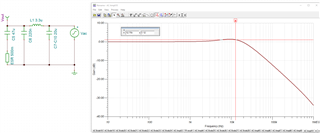Other Parts Discussed in Thread: LM5156H
Hi All,
we are designing a similar flyback converter to PMP22764 with LM5156H and have some questions.
1) Input Capacitor selection and calculation on PMP22764
when we use SNVA866 EQ23 to calculate Cin_min for PMP22764 with ripple 100mV we get ~ 60uF
On PMP22764 there are 4x 10uF,50V,X7R,1210 (C7,C8,C9,C10) ant 24V this is approx. 4x5uF = 20uF and in combination with C5 ( 47uF) = ~ 67uF is this the correct way to calculate the input capacitor?
2)Input filter estimation for conducted EMI from flyback converter to input
There are multiple app notes from TI on this subject but all are regarding to a BUCK and not a FLYBACK converter ( SLUP362, SNVA489C, SNVU693, SLYT782, SNVA810 ...)

So in PPMP22764 the L1 is Lf, and we are assuming that Cf is C5 but then the Cd is missing, please can you explain how dis you estimate or calculate this filter for the PMP22764?
3) Output Capacitor selection and calculation on PMP22764
The PMP22764 uses only 56uF.
But when i use EQ 21 and 22 from SNVA866 i get:
NP =1, Ns =2, Vload=56V, D' = 0.4 @Vin=18V, Lm=15uH
fz_rhp ~ 30kHz
fcross = 30/5 = 6kHz
dVload = 100mV, dIload= 1.25A/2 = 0.625A
Cload_min= 165uF
Can you comment why only 56uF is used, this is 3x less than Cload_min ?
4) How is the L2 PI output filter designed, what are the assumptions?
Best Regards,
David.







